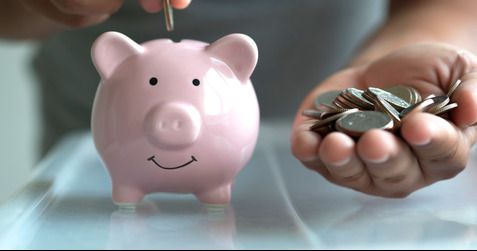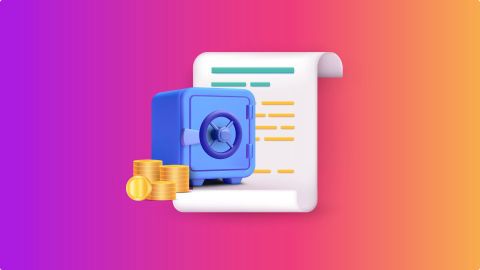Here are the best tips to save money to buy a house:
Set clear goals
Set clear financial goals by determining how much amount you will need to buy your dream house. Research the price range for your dream home, considering location, size, and other preferences. Factor in additional costs like property taxes, registration fees, and maintenance. Furthermore, determine after how many years you are going to buy a house and factor in the inflation rate to create an approximate savings target. If you want to buy a house through a loan, consider the down payment amount for saving.
Evaluate your financial situation
Calculate your current savings and how much more you will need to buy your dream house. Ensure that you have adequate savings for covering other major expenses such as a child’s education, marriage, or any medical emergency. Review where your money goes each month, and identify areas where you can cut back to save more. You can try to improve your credit score by clearing debts, paying bills on time, and reducing credit card usage to increase your chances of getting a home loan.
Create a dedicated savings plan
You can start by reviewing your expenses and creating a monthly budget based on the 50-30-20 rule. Allocate 50% of your income to necessities, 30% to wants, and 20% to savings. Ensure that you allocate as much as possible from this 20% towards your house savings goal. Ensure that you use the saved amount to invest in various high-return investment instruments with diversification to multiply the wealth and increase the saved amount quickly.
Reduce unnecessary expenses
Review your spending habits and reduce costs, such as eating out, shopping, or subscriptions that you feel are non-essential. Try to find cheaper alternatives to everything you want to buy without drastically compromising on quality. Use energy-efficient appliances and cut down on utility costs like electricity, gas, and water. When buying groceries or household items, try wholesale markets or buying bulk to save on a regular basis.
Invest your savings
Whatever amount you are saving, try to invest as much as possible in various market-linked and fixed-income instruments. Consider low-risk, high-return investments like mutual funds, Public Provident Funds (PPF), or Fixed-Income Deposits that offer stable returns to grow your savings faster. Include market-linked instruments such as stocks for better returns. However, ensure that all the investments are made after extensive market research.
Monitor and adjust your budget
Investment goals, risk appetite, and time horizon may change, making some of your investments or the current saved amount inadequate. It is vital that you constantly monitor your budget to ensure you are on the right path of saving along with your portfolio to remove loss-making investments. If you’re falling short of your target, find ways to reduce expenses further or increase your savings rate.
You can consider investing Bajaj Finance Fixed Deposit. With a top-tier AAA rating from financial agencies like CRISIL and ICRA, they offer one of the highest returns, up to 8.60% p.a.








 Food & Beverages
Food & Beverages Fashion
Fashion Beauty & Personal Care
Beauty & Personal Care Health & Wellness
Health & Wellness Home & Kitchen
Home & Kitchen

 Loan Against Shares
Loan Against Shares Loan Against Mutual Funds
Loan Against Mutual Funds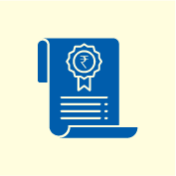 Loan Against Bonds
Loan Against Bonds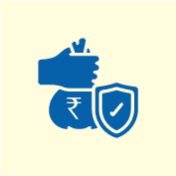 Loan Against Insurance Policy
Loan Against Insurance Policy ESOP Financing
ESOP Financing Two-wheeler Loan
Two-wheeler Loan Loan for Lawyer
Loan for Lawyer Industrial Equipment Finance
Industrial Equipment Finance Industrial Equipment Balance Transfer
Industrial Equipment Balance Transfer Industrial Equipment Refinance
Industrial Equipment Refinance
 Smartphones
Smartphones Air Conditioner
Air Conditioner Led TVs
Led TVs Air Coolers
Air Coolers Refrigerators
Refrigerators Washing Machines
Washing Machines Laptops
Laptops

 Trading Account
Trading Account Open Demat Account
Open Demat Account Margin Trading Financing
Margin Trading Financing Share Market
Share Market Invest in IPO
Invest in IPO All stocks
All stocks Top gainers
Top gainers Top losers
Top losers 52 week high
52 week high 52 week low
52 week low
 Business Loan
Business Loan Secured Business Loan
Secured Business Loan Loan against property
Loan against property Loans against property balance transfer
Loans against property balance transfer Loan against shares
Loan against shares Home Loan
Home Loan Loans against mutual funds
Loans against mutual funds Loan against bonds
Loan against bonds Loan against insurance policy
Loan against insurance policy
 Term Life Insurance
Term Life Insurance ULIP Plan
ULIP Plan Savings Plan
Savings Plan Retirement Plans
Retirement Plans Child Plans
Child Plans Investment Plans
Investment Plans
 Get Bajaj Prime
Get Bajaj Prime
 ULIP Plan
ULIP Plan Savings Plan
Savings Plan Retirement Plans
Retirement Plans Child Plans
Child Plans Free Demat Account
Free Demat Account Invest in IPO
Invest in IPO Invest in Stocks
Invest in Stocks Margin Trading Facility
Margin Trading Facility
 Check your Credit Score
Check your Credit Score
 Bike
Bike Scooter
Scooter Electric Vehicle
Electric Vehicle Best Sellers
Best Sellers Popular Brands
Popular Brands
 New Car Loan
New Car Loan Used Car Loan
Used Car Loan Loan Against Car
Loan Against Car Car Loan Balance Transfer and Top-up
Car Loan Balance Transfer and Top-up
 Engagement Zone
Engagement Zone Game Zone
Game Zone
 Personal Loan EMI Calculator
Personal Loan EMI Calculator Personal Loan Eligibility Calculator
Personal Loan Eligibility Calculator Home Loan EMI Calculator
Home Loan EMI Calculator Home Loan Eligibility Calculator
Home Loan Eligibility Calculator Good & Service Tax (GST) Calculator
Good & Service Tax (GST) Calculator Flexi Day Wise Interest Calculator
Flexi Day Wise Interest Calculator Flexi Transaction Calculator
Flexi Transaction Calculator Secured Business Loan Eligibility Calculator
Secured Business Loan Eligibility Calculator Fixed Deposits Interest Calculator
Fixed Deposits Interest Calculator Two wheeler Loan EMI Calculator
Two wheeler Loan EMI Calculator New Car Loan EMI Calculator
New Car Loan EMI Calculator Used Car Loan EMI Calculator
Used Car Loan EMI Calculator All Calculator
All Calculator
 Hot Deals
Hot Deals Clearance Sale
Clearance Sale Kitchen Appliances
Kitchen Appliances Tyres
Tyres Camera & Accessories
Camera & Accessories Mattresses
Mattresses Furniture
Furniture Watches
Watches Music & Audio
Music & Audio Cycles
Cycles Mixer & Grinder
Mixer & Grinder Luggage & Travel
Luggage & Travel Fitness Equipment
Fitness Equipment Fans
Fans
 Personal Loan for Doctors
Personal Loan for Doctors Business loan for Doctors
Business loan for Doctors Medical Equipment Finance
Medical Equipment Finance Secured Business Loan
Secured Business Loan Loan against property
Loan against property Loan against share
Loan against share Gold Loan
Gold Loan Home Loan
Home Loan
 Smartphones
Smartphones Air Conditioners
Air Conditioners LED TVs
LED TVs Air Coolers
Air Coolers Refrigerators
Refrigerators Washing Machines
Washing Machines Laptops
Laptops Water Purifiers
Water Purifiers Tablets
Tablets Kitchen Appliances
Kitchen Appliances Mattresses
Mattresses Furniture
Furniture Music and Audio
Music and Audio Cameras & Accessories
Cameras & Accessories Cycle
Cycle Watches
Watches Tyres
Tyres Luggage & Travel
Luggage & Travel Fitness Equipment
Fitness Equipment
 Home Loan
Home Loan Transfer your existing Home loan
Transfer your existing Home loan Loan against Property
Loan against Property Home Loan for Salaried
Home Loan for Salaried Home loan for self employed
Home loan for self employed Home Loan EMI Calculator
Home Loan EMI Calculator Home Loan eligibility calculator
Home Loan eligibility calculator Home Loan balance transfer
Home Loan balance transfer
 Offer World
Offer World
 Articles
Articles
 Overdue Payments
Overdue Payments Other Payments
Other Payments
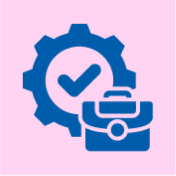 Document Center
Document Center Bank details & Documents
Bank details & Documents Tax Invoice Certificate
Tax Invoice Certificate
 Do Not Call Service
Do Not Call Service
 Your Orders
Your Orders Hamara Mall Orders
Hamara Mall Orders

 Fixed Deposit (IFA) Partner
Fixed Deposit (IFA) Partner Loan (DSA) Partner
Loan (DSA) Partner Debt Management Partner
Debt Management Partner EMI Network Partner
EMI Network Partner Become a Merchant
Become a Merchant Partner Sign-in
Partner Sign-in
 Food & Shopping
Food & Shopping Credit Card Hub
Credit Card Hub ULIP Plans
ULIP Plans Top Gainers Stock
Top Gainers Stock Top Losers Stock
Top Losers Stock Saving Plan
Saving Plan Term Insurance
Term Insurance
 Live Videos
Live Videos